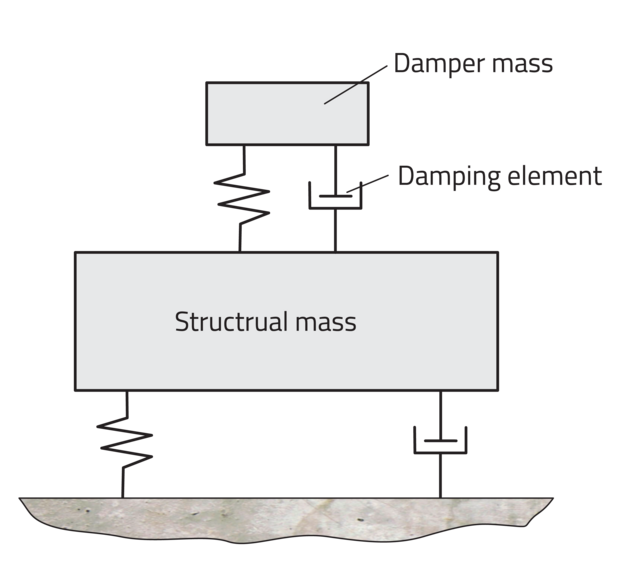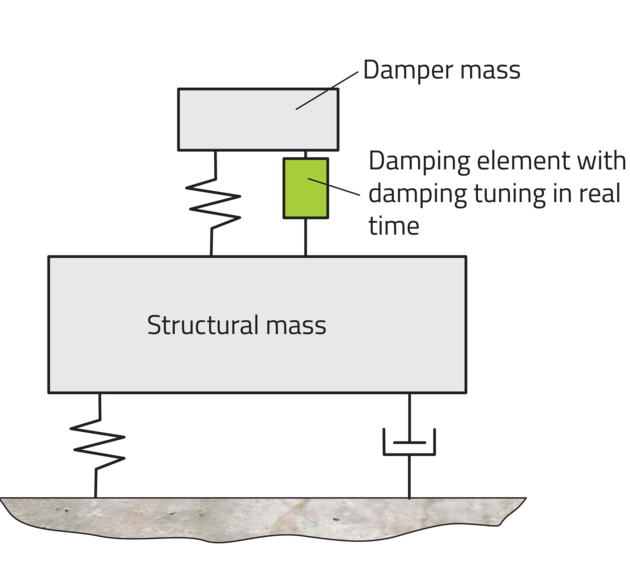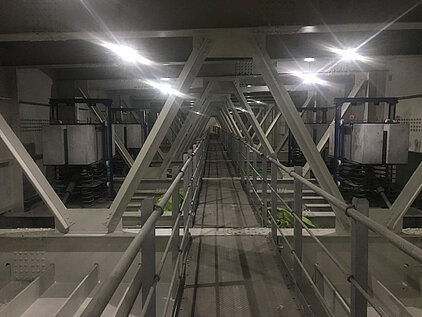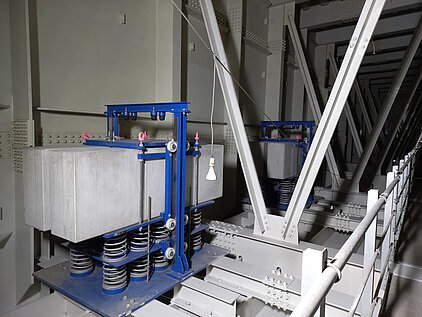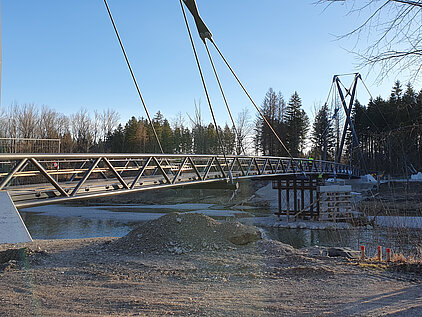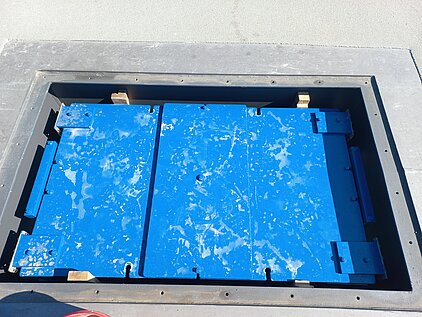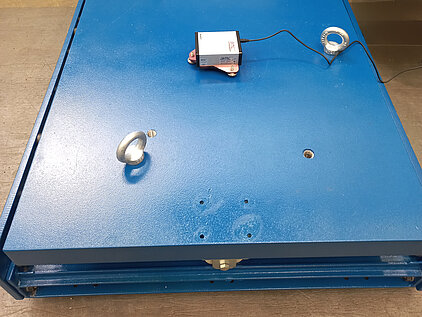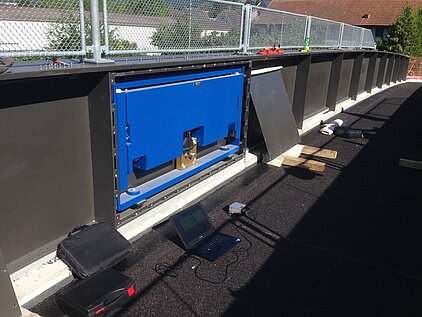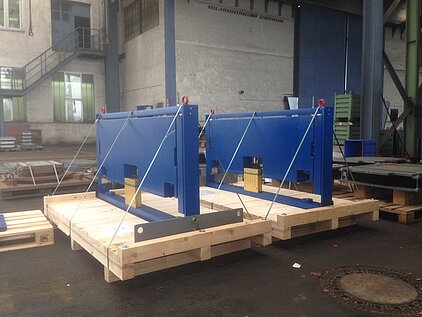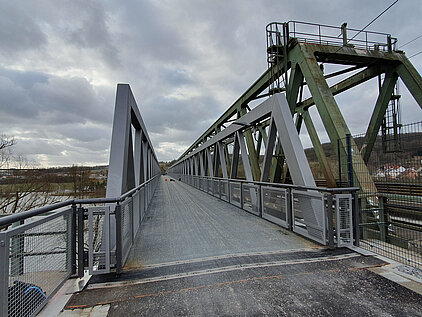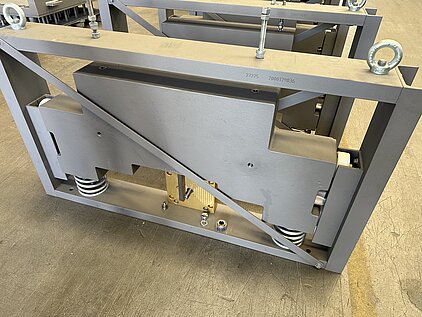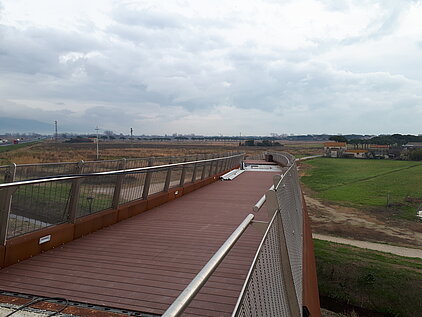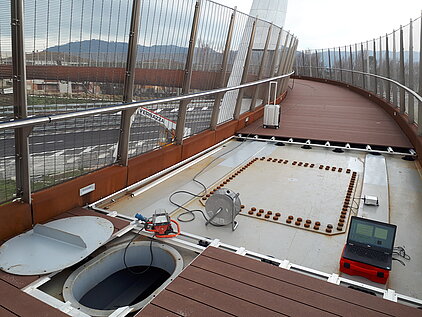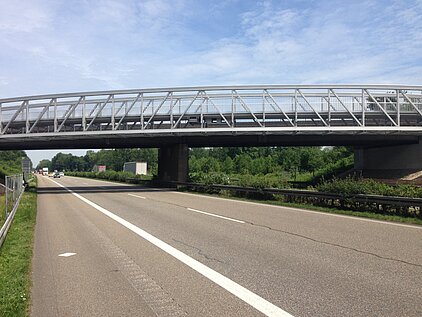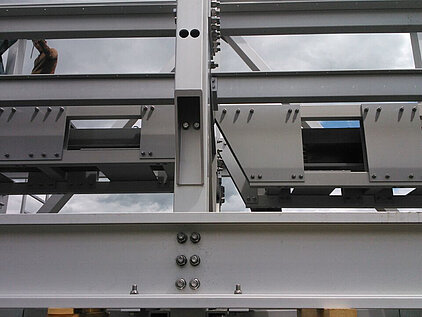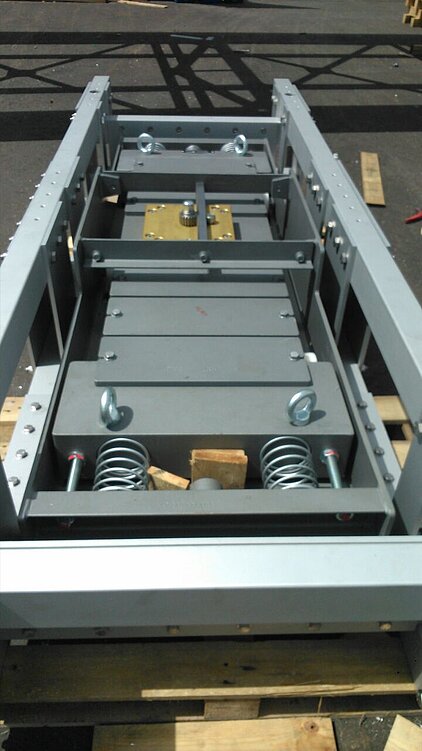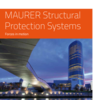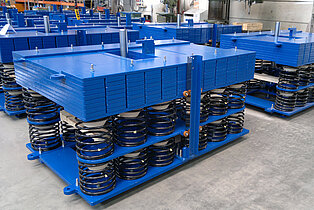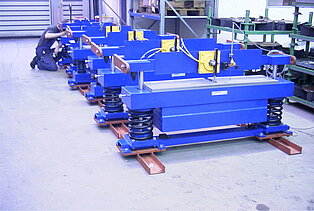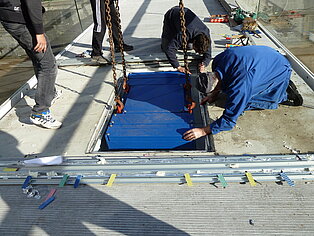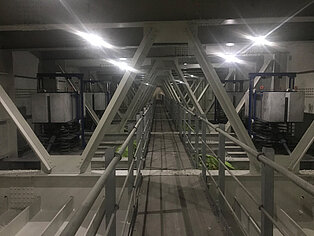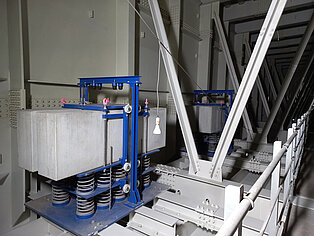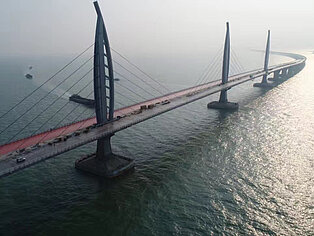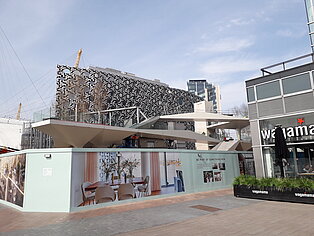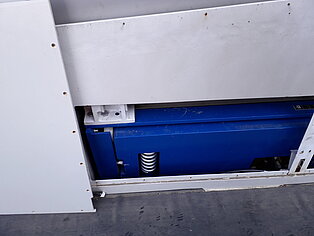TMD (Tuned Mass Damper)
A TMD is based on a spring-mass system. The spring is calibrated to the eigenfrequency of the structure and the required mass is designed depending on the modal mass of the structure. Decisions, for example with regard to form, mass, frequency or damping, are made in close collaboration with the specifier.
For pendulum TMDs the pendulum lengths, the pendulum supports and damping elements in the passive tuned mass damper are designed using a non-linear dynamic simulation of the structure.
Frequency and damping can be adjusted in real time with the adaptive tuned mass damper. An adaptive TMD produces a60 – 80% reduction in vibrations with75 – 85% of the nominal mass.
MAURER provides the following services to help select the correct TMD:
- Measuring vibrations in the structure to ascertain the current condition
- Advice in selecting the optimum tuned mass damper
- Non-linear analysis or time-based simulation with wind and seismic excitation
- Installation of the TMD
- Vibration test as final check of function
- Monitoring


